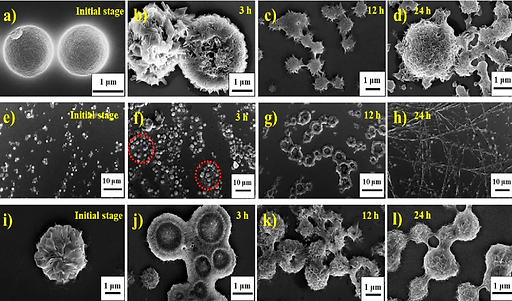
Prof. Anjan Chakraborty


Nanoparticle-Liposome interactions:
Membranes are usually composed of phospholipids which consist of polar head group and non-polar tail group. Lipid bilayer or liposome is a spherical vesicle which is made up of the same material as a cell membrane. When the nanoparticles come to the vicinity of the living systems, the membrane acts as their initial point of contact and appears as the frontier between the cell and the nanoparticles. Our group investigates the tuneable stability of the liposomes in presence of different surface-functionalized nanoparticles. Recently, we are also exploring the formation and stability of the "lipid corona" (coating of lipid molecules around NPs) around the Au NPs.



Biomolecules-Liposome interactions:
A biomolecule or biological molecule is a loosely used term for molecules present in organisms that are essential to one or more typically biological processes. Our study mainly focuses on the effect of several biomolecules (e.g. amino acids or oligopeptides, Monosaccharides or Oligosaccharides, and Nucleotides or Oligonucleotides) on the stability of lipid vesicles. This study is important to prepare the engineering lipid vesicles which have better resistivity in our immune system.



Self-assembly of biomolecules:
The spontaneous formation of self-assembled amyloid structures of proteins is responsible for several major human neurodegenerative diseases. The formation of the self-assembled structure of amino acids or proteins and their interaction between lipid membrane has garnered great importance to understand the underlying cytotoxic behaviour of these amyloid structures which also help us to understand several proteins or peptide-based fusion and fission of the lipid membrane.



Interaction between carbon dots and biomolecules:
Carbon dots have emerged as a promising imaging probe. Our study explores the possibility to utilize various synthesized carbon dots as a potential candidate to monitor lipid phase dynamics and kinetics of biomolecular self-assembly process.


